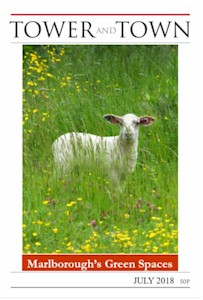

Tower and Town, July 2018 (view the full edition) (view the full edition)St Peter's ChurchyardBut for the efforts of the likes of Jake Seamer 40 years ago there might be no green space at all at the west end of the High Street - just a large tarmacked roundabout supposedly easing the flow of traffic on the A4. Thankfully concerned citizens rallied to save not only the church from destruction, but also to preserve a space of green peace in the midst of the busy-ness of 21st century traffic that is St Peter's churchyard. Today the churchyard is managed by the volunteers of St Peter's Trust. A gardening team of seven or eight of us work on a rotational basis ably and professionally assisted by Richard Beale. Daffodils followed by geraniums feature along the east end of the church, and nearby flanking the path is a fine rose-bed, some of whose plants it is said go back over 20 years. The east end of the churchyard however is dominated by large trees the largest of which is a holm oak, said by a recent visitor to be in much better health than the ones he had recently seen at Kew. The only downside of this tree is that it sheds its leaves throughout the year! Alongside the entrance to the church is a bed of annuals and perennials providing a colourful welcome to the many visitors to the church. There is more open space at the west end of the church which features a rose-bed planted in 2002 in memory of John O'Regan, first Secretary of the Trust. Another Founder member, Dr Tim Maurice, is commemorated with a crab apple at the east end. There is also a fine lilac bush and laburnum tree, and at the farthest limit of the churchyard a recent innovation - a wildflower bed. Burials in the churchyard ceased in the 1850s. However, records still provide us with some interesting insights. Marlborough's public houses appear to have been dangerous places in the 17th and 18th centuries as shown by the death of Richard Holmes who died from a fall from a pear tree at the King's Arms, and Jane Sanders and Edith Dobson who died the following year, killed by a "sudden fall of loft at the White Hart". In the 18th century there was a spate of deaths from smallpox. David Du Croz |